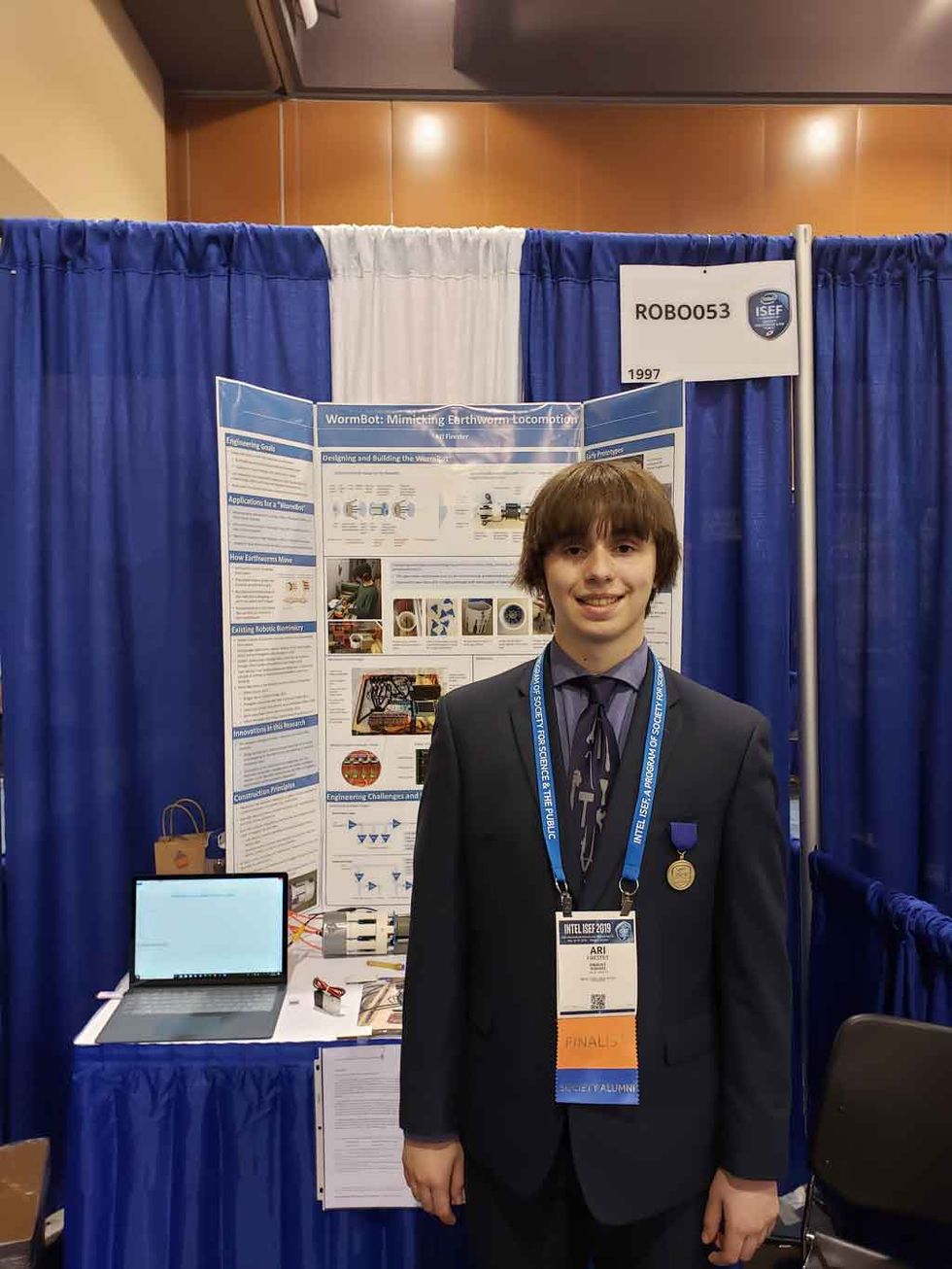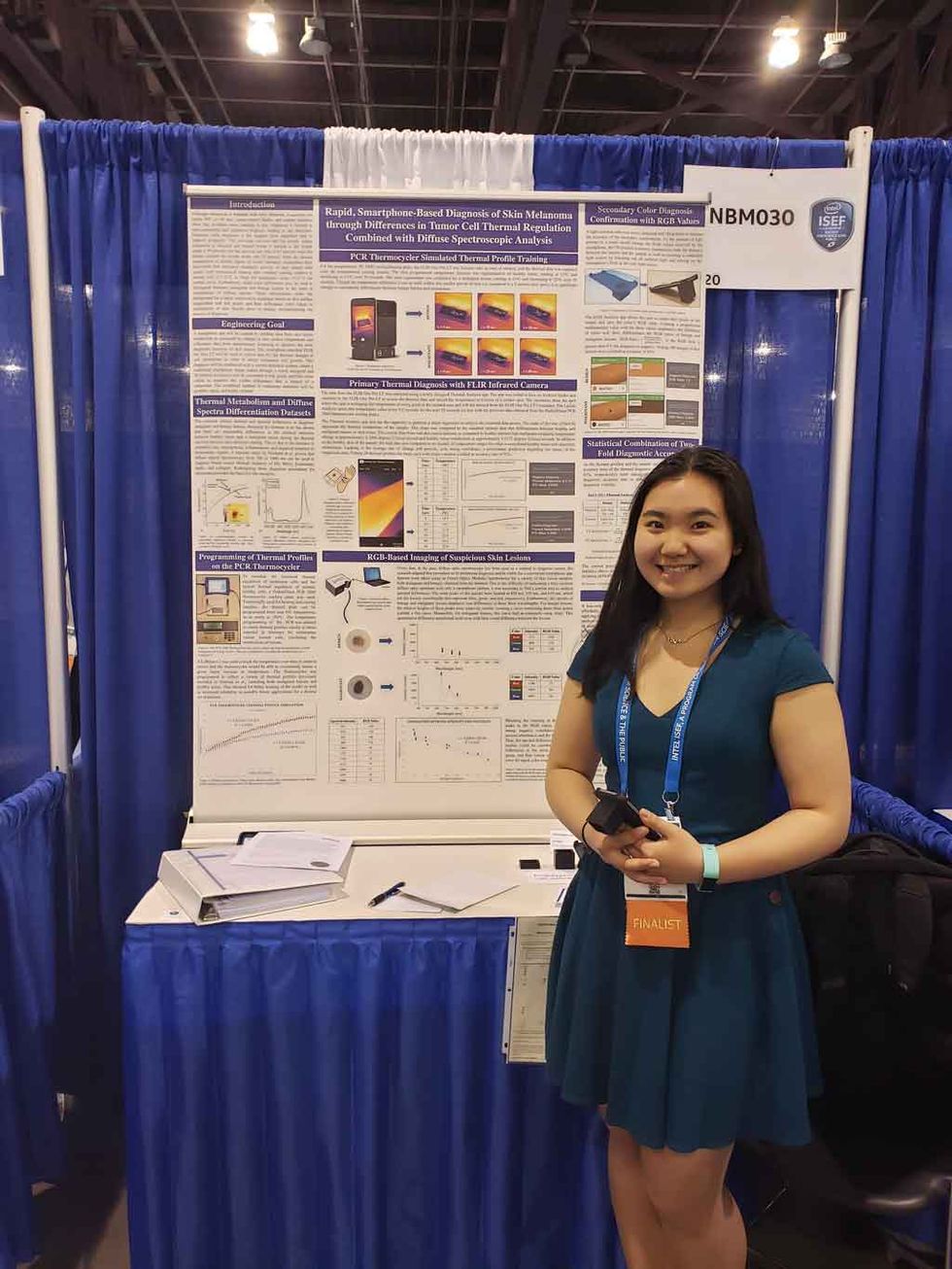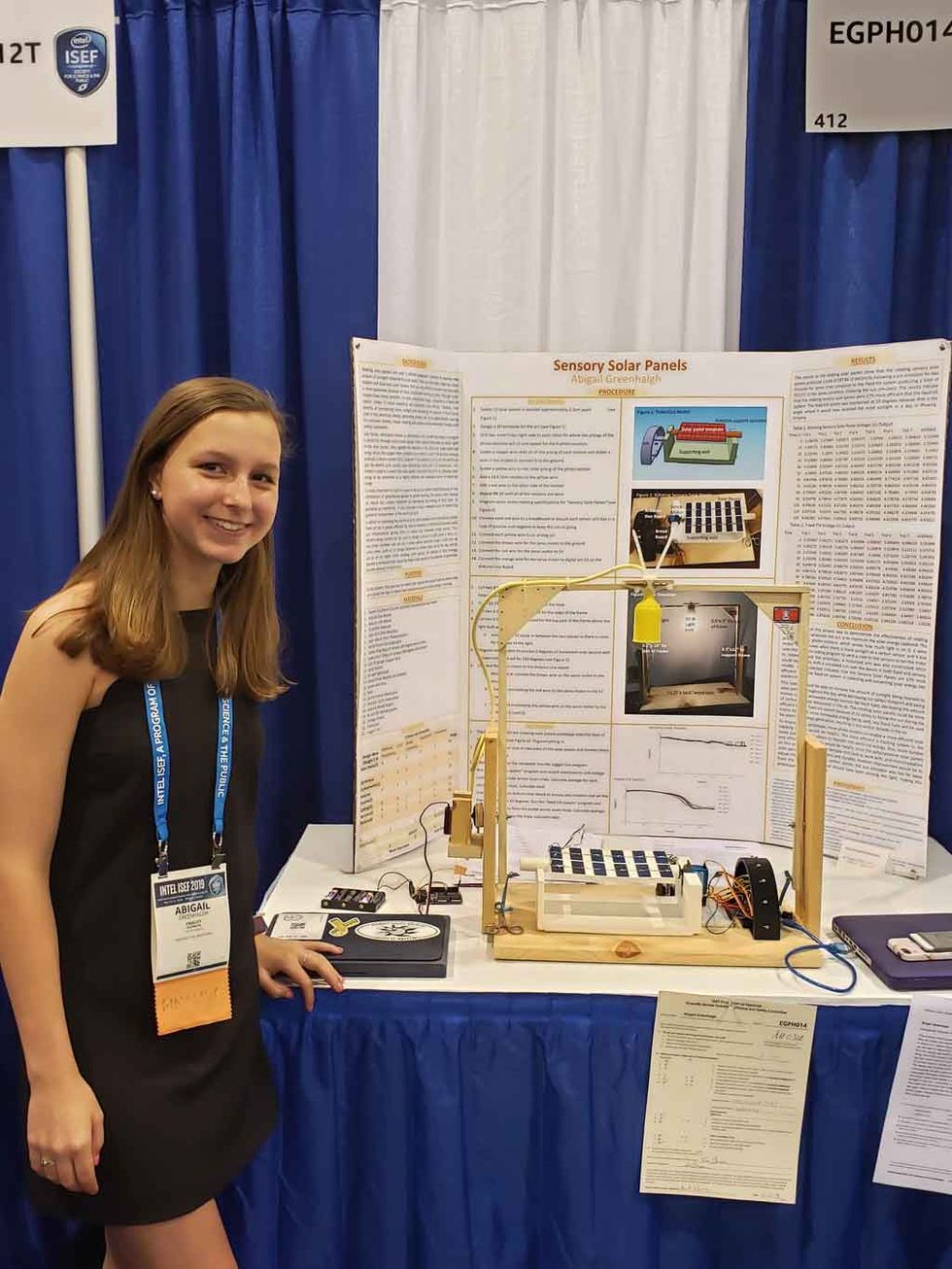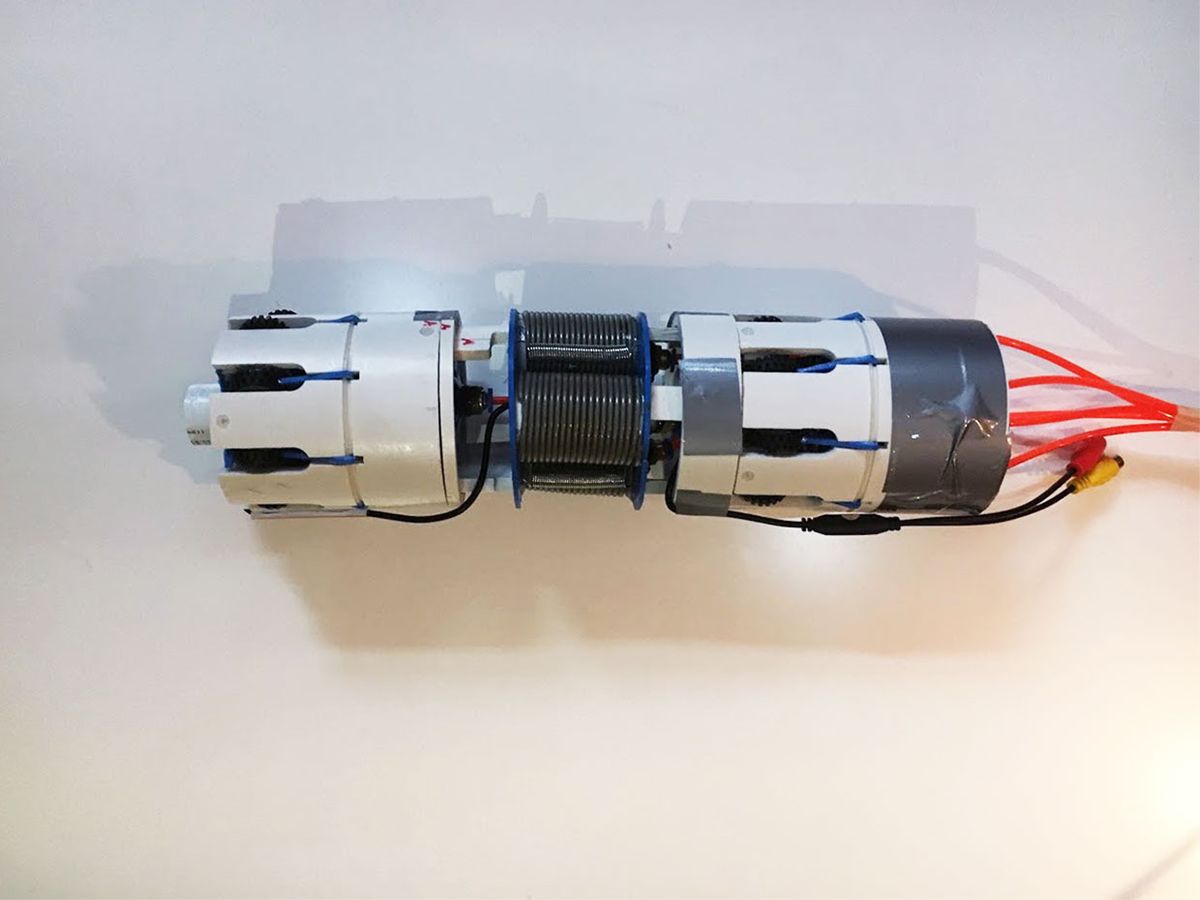THE INSTITUTETeenager Ari Firester watched on television last year as members of a youth soccer team were saved from a flooded cave in Chiang Rai Province, Thailand. The two-week-long effort, which left one rescuer dead, inspired Firester to create a technology that might prevent such a tragedy from occurring again.

Firester, 16, a junior at Hunter College High School in New York City, created “Wormbot,” an earthworm-inspired robot capable of maneuvering in narrow spaces. The project was displayed at Intel’s annual International Science and Engineering Fair, held in May in Phoenix. His invention earned him the US $10,000 IEEE Presidents’ Scholarship, which is given at the fair.
Controlled by an Arduino microcontroller and built with off-the-shelf items, the robot makes wormlike movements by using eight retractable claws along its length to grip its surroundings and prevent it from slipping. The modular robot is powered by compressed air. The control and power components are connected to the robot through a thin, plastic air tube. By using inflatable actuators, its body can be lengthened, shortened, or bent.
Established by the IEEE Foundation, the scholarship recognizes a student for an outstanding project that demonstrates an understanding of electrical engineering, electronics engineering, computer science, or another field of IEEE’s interest. The scholarship, administered by IEEE Educational Activities, includes a complimentary IEEE student membership and an engraved plaque. Second- and third-place monetary prizes were awarded as well.
“I remember seeing on the news that a [Thai] Navy Seal had died navigating the narrow cave to rescue the soccer team,” Firester says. “This inspired me to create something that would navigate through dangerous places without putting human lives at risk.”
Firester says he taught himself how to design and build the robot. He’s always been a tinkerer, he says: “When I was younger I liked to take apart things, like old microwaves, just to see how they worked.”
Music is also an important part of his life. He has played the violin from an early age. A fan of classical music, he enjoys analyzing different compositions—which he says has helped him examine engineering problems and come up with solutions.
He plans to attend a university with a well-established engineering program. He says he wants to develop Wormbot to carry out tasks such as entering dangerous areas to take air samples and filming damage in mines, reactors, and tunnels—maybe even making repairs.

DETECTING SKIN CANCER
The second-place scholarship winner was Melissa Woo, a junior at Greenwich High School in Connecticut. She developed a smartphone app that is designed to diagnose melanoma. She received $600 from the IEEE Foundation.
The app Woo developed assesses suspicious lesions by analyzing their surface temperature. Cancerous tissues are known to produce more heat than normal tissues because the rapidly dividing cells have a higher metabolic rate. The app, which requires a phone equipped with an infrared camera, examines the suspicious tissue using a combination of thermal and color analysis.
Woo was inspired to develop her project when a friend’s father was diagnosed with melanoma.
“The one thing that motivated me from the start was the potential to help people,” she says. “Whenever I faced a problem, whether it be a glitch in the line of code or fundamental struggles with methods of diagnosis, it was sometimes hard to continue with my project. However, when I thought about why I started the project, I worked harder.”
She says she hopes her project will create a reliable alternative to time-consuming and expensive biopsies.

SMARTER SOLAR PANELS
Abigail Greenhalgh, a sophomore at Georgetown Visitation Preparatory School in Washington, D.C., developed a way to rotate solar panels to an angle where they can obtain the maximum amount of daily sunlight. She received $400 from the IEEE Foundation.
Her “Sensory Solar Panels” project uses a 3D-printed motorized arc outfitted with resistors. The photo resistors communicate with a servo motor through an Arduino board, which processes the data to identify the brightest spot along the arc and manipulate the panel’s angle in order to maximize exposure. The solar panels are capable of being set at eight different angles and can rotate to maximize exposure.
Greenhalgh says her passion for the environment inspired her. “When I was younger I wanted to be a veterinarian, but then I realized that I couldn’t deal with blood,” she says. “But I still wanted to help animals, the environment, and people by reducing pollution—which environmental engineering incorporates.” She says she wants to focus on environmental or mechanical engineering in college.
“Getting an award from IEEE was amazing,” she says. “At first, I didn’t think they said my name. I thought for sure they called another Abigail Greenhalgh!”
Daniels, a journalism graduate from Rowan University, in Glassboro, N.J., is an intern at IEEE Educational Activities.
